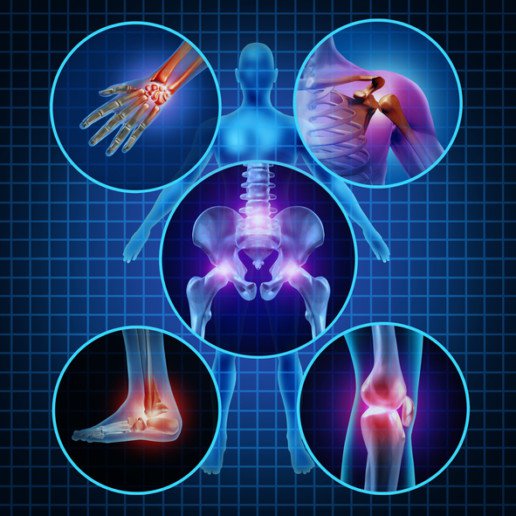
Bend-y, Swivel-y, Hinge-y Joints!
The next time you text, put on your seat belt, sit down or walk, say “thanks” to your joints. Our body’s joints allow us astonishing freedom of movement and we rarely give them a thought - until moving them causes pain.
A joint, also called an articulation, is a spot where two bones are attached by connective tissue such as tendons and cartilage. There are six kinds of joints, all providing different kinds of motion in your body:
- Hinge joints
- Ball and socket joints
- Condyloid joints
- Pivot joints
- Gliding joints
- Saddle joints
The biggest hinge joint in your body is your knee. It’s also your most complex joint, made up of a multiple types of joints. A hinge joint can only move “back and forth”, flexing and extending on one axis. Other examples of hinge joints are your fingers and toes.
You just have four ball-and-socket joints, two in your shoulders and two in your hips. Also called spheroidal joints, a ball-and-socket joint consists of a rounded end of a bone moving in a cupped depression of another bone. The ball-and-socket joints in hips and shoulders allow you the greatest range of movement than any other joint in your body, allowing flexion and extension, adduction and abduction (towards your body and away from your body) and circular movements.
Condyloid joints are made up of a bone with an egg-shaped head moving in an elliptical cavity of another bone, allowing a wide range of motion including flexion and extension, adduction and abduction and circular movements. Your wrists and the joints at the base of your index fingers are condyloid joints.
A pivot joint is also called a rotary joint or a trochoid joint. One bone moves within a ring formed by the second bone and ligaments. A pivot joint moves around a single axis in a rotary, or circular, motion. You have a pivot joint in your neck that allows you to rotate your head from left to right, and between your radius and ulna, the bones in your forearm, that allow your forearm to twist without moving your shoulder.
Gliding joints are two flat or just slightly rounded bone ends that slide against each other. Also called arthrodial joints or plane joints, these allow for simple and limited movement, either angular, linear or circular. These joints are found between your vertebra, in your ankle and in your foot.
Saddle joints are just that - one bone end is shaped like a saddle and the other bone end is shaped like the horse. Although you have very few saddle joints in your body, they can flex and extend and move in adduction and abduction. You have a saddle joint in the base of your thumb and between your clavicle and your manubrium, which allows you to raise your arm over your head. There is also a saddle joint in your inner ear that transfers vibrations in your ear so your brain can hear the sound.
Take a moment to bend, twist, reach and grasp - and admire your amazing joints!
Do you have questions about joints or joint pain? Call our office at 708-283-2600 or click here to schedule an appointment. Dr. Aribindi and Dr. Park are always happy to answer your questions!

